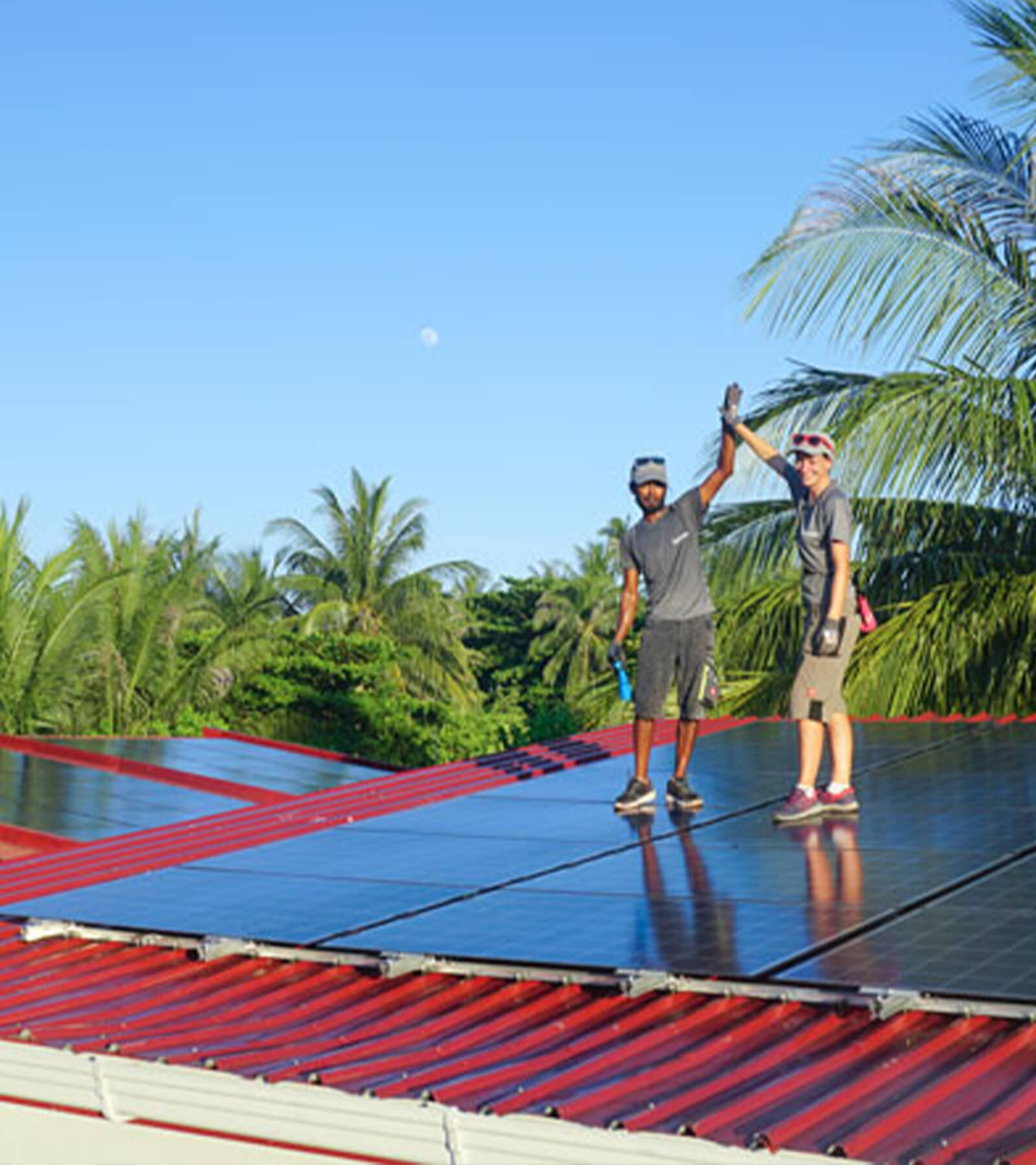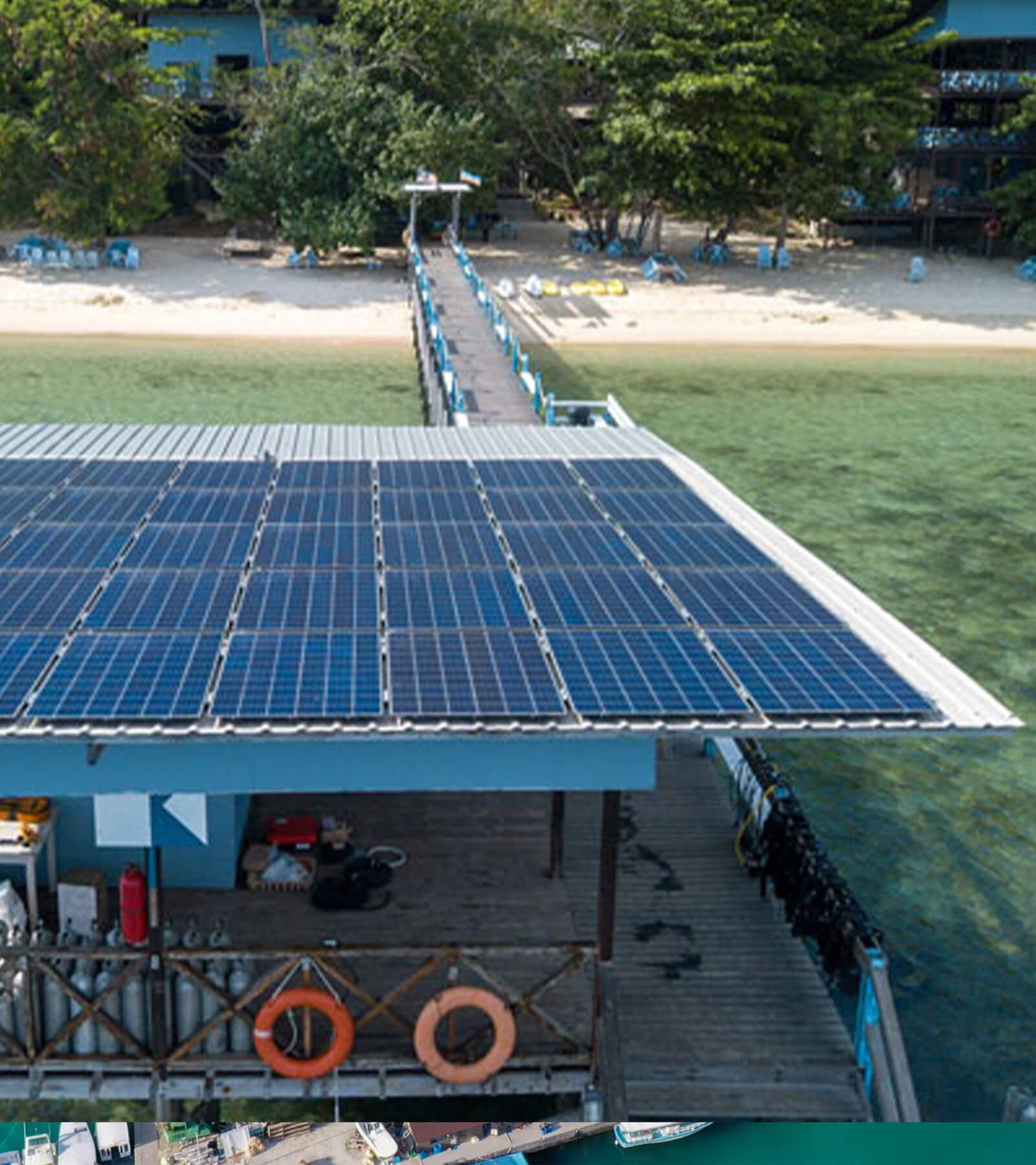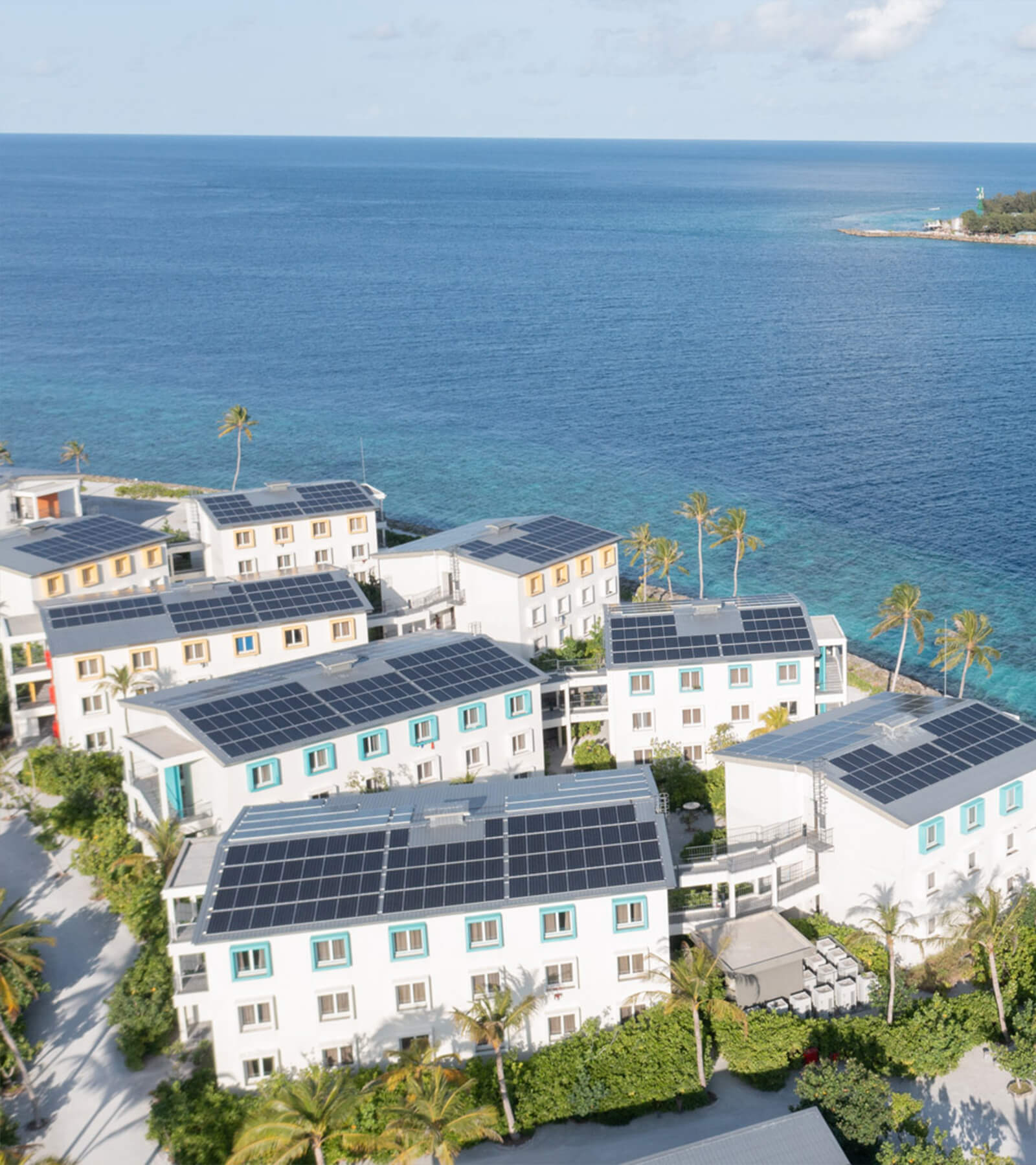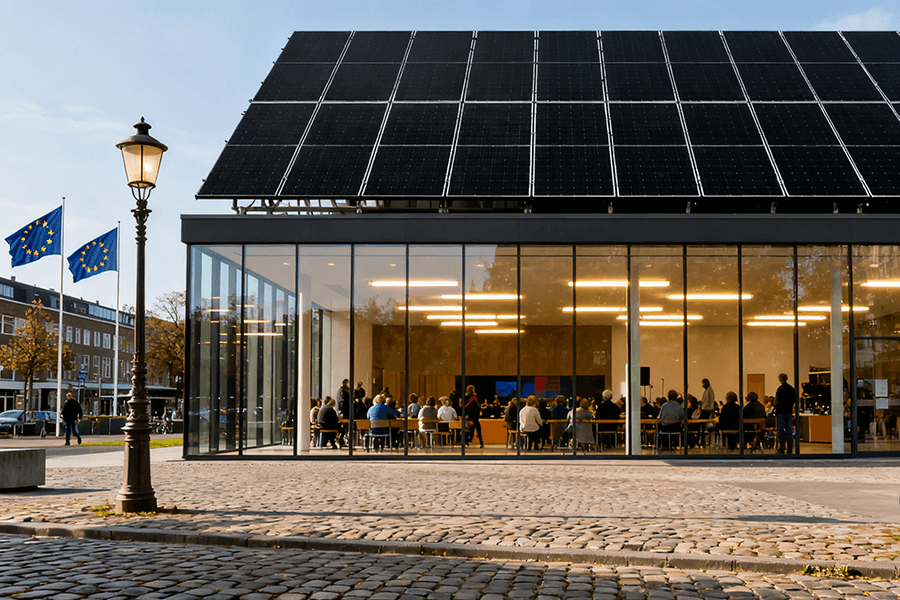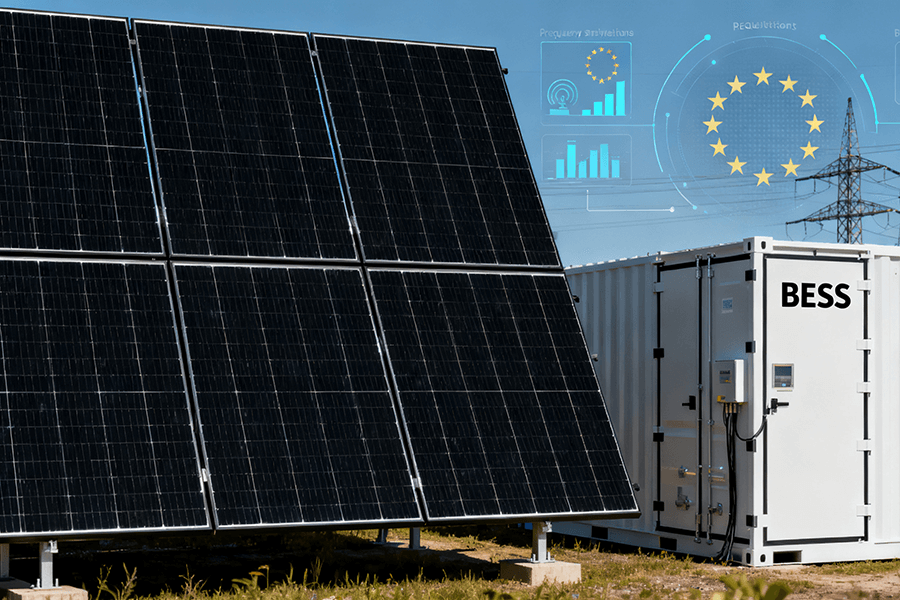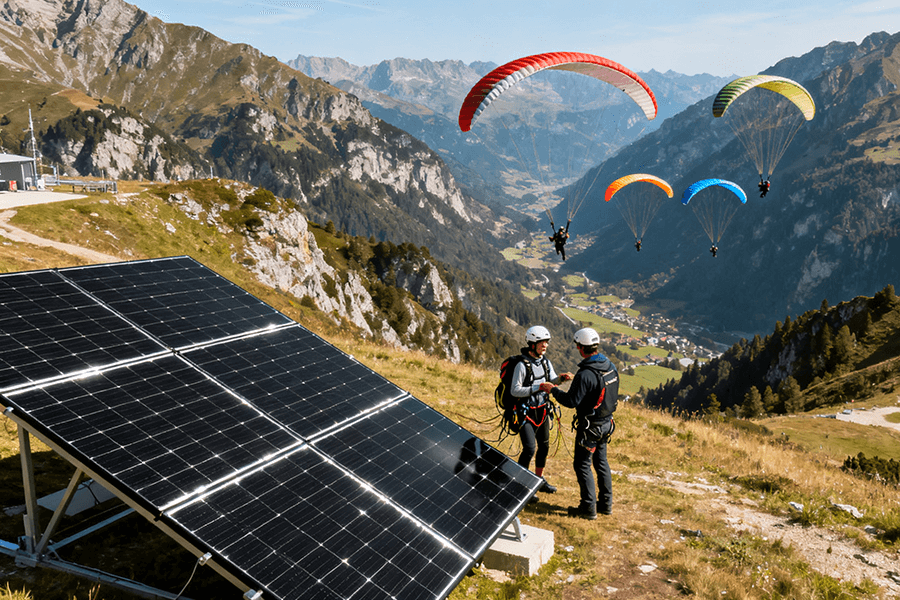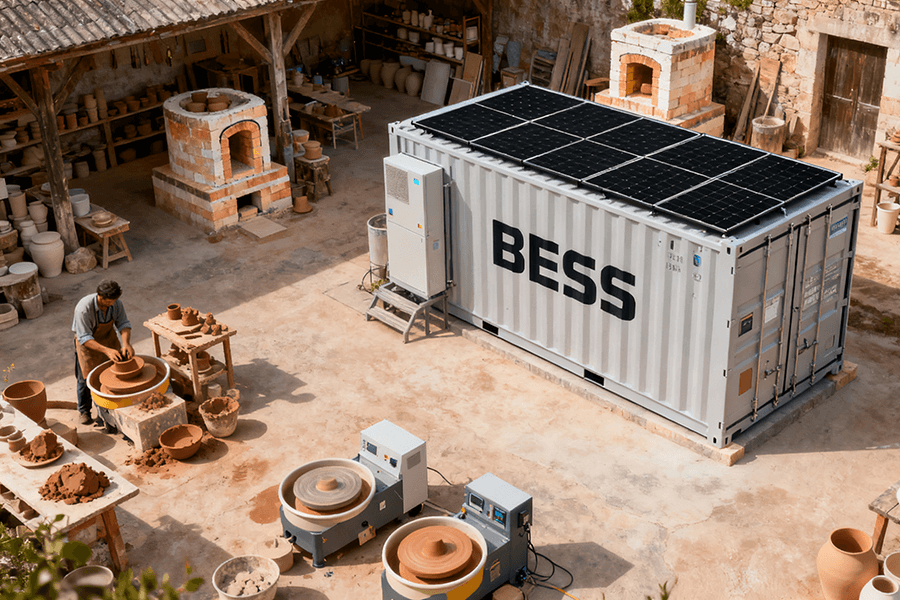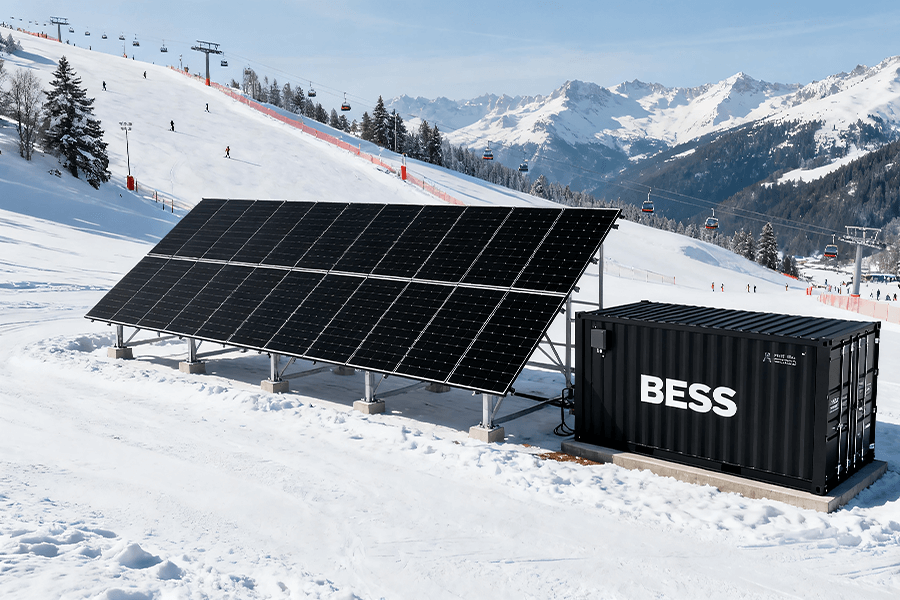
The Crisis Power Gap—Diesel’s Last Stand
Let’s cut to the chase: Europe is grappling with a climate conundrum, and urban emergency shelters are on the frontlines. The European Environment Agency’s latest data paints a stark picture:
Alarming Rise in Extreme Weather Events
- Extreme weather events have surged 37% over the past decade, marking a significant escalation in climate-related disruptions. This sharp increase underscores the growing urgency to address climate challenges.
Strained Shelter Resources
- In 2023 alone, there was a 30% increase in the activation of flood and heatwave shelters compared to 2018. Such a rapid rise is putting a severe strain on existing resources, highlighting the need for more sustainable and reliable solutions.
However, the challenges don’t end with the increase in extreme weather events. There’s another pressing issue:
The Problem with Current Power Sources
A staggering 68% of EU urban shelters still depend on diesel generators—a solution that’s as problematic as it is outdated. Here’s why diesel generators fall short:
- Noise Pollution: These generators aren’t just noisy; they produce a cacophony of sound, loud enough to shatter the tranquility of even the quietest neighborhoods.
- Environmental and Health Concerns: Their emissions are equally concerning, often triggering air quality alerts and exacerbating public health issues in densely populated areas.
Enter Battery Energy Storage System (BESS) containers—the unsung heroes Europe’s shelters have been waiting for. Here’s how BESS containers offer a superior alternative:
- Silent Operation: Unlike diesel generators, BESS containers operate silently, ensuring a peaceful environment for those seeking refuge.
- Emission-Free: They align perfectly with Europe’s ambitious climate goals, as they produce zero emissions.
- Reliable Power Supply: In high-stakes situations where every second counts, BESS containers deliver consistent, reliable power. This makes them the ideal solution for emergency shelters in the face of a changing climate.
Critical Energy: Powering the Lifelines of Shelters
When disaster strikes, electricity isn’t a luxury—it’s a lifeline separating chaos from order. Battery Energy Storage System (BESS) containers emerge as unsung heroes, ensuring that critical systems remain operational when every watt counts. Real-world case studies illustrate their transformative impact, demonstrating how these compact powerhouses safeguard lives and maintain essential services.
Medical Equipment: Uninterrupted Power for Life-Saving Gear
In emergency shelters, medical stations serve as the frontline defense for vulnerable populations. Equipment such as oxygen concentrators, defibrillators, and vaccine refrigerators are not optional—they are essential for survival. However, these devices are as intolerant of power outages as a cat is of baths.
BESS containers eliminate this existential risk by providing a 100% uninterrupted power supply, ensuring that medical professionals can perform their duties without interruption.
A prime example is the 2023 heatwave in Berlin, where soaring temperatures strained the city’s power grid. Amidst the crisis, a 500kWh BESS container became the linchpin for a local emergency shelter. It powered life-saving equipment for 200 vulnerable residents, including 42 elderly patients who relied on oxygen therapy.
For perspective, this system delivered enough energy to simultaneously run 100 home refrigerators and 50 oxygen machines, maintaining critical care without a single interruption. In emergencies, where every second matters, BESS systems don’t falter—they deliver.
Essential Services: Lights, Water, and Communication
Envision a flood shelter without clean water or functional communication devices—a recipe for panic and disarray. BESS containers prevent such scenarios by providing reliable, off-grid power.
Paris experienced this firsthand during a 2023 grid outage caused by severe flooding along the Seine River. An 800kWh BESS unit stepped in as a resilient power source, ensuring the continuity of essential services for 500 evacuees over five consecutive days.
This BESS system powered water purification systems capable of treating 2,000 liters of water per hour, guaranteeing a steady supply of clean drinking water. Additionally, it kept two-way radios, smartphones, and other communication devices operational, enabling seamless contact with emergency response teams. Gone were the days of “Is anyone there?” radio static; instead, the shelter became a hub of reliable communication, enhancing safety and coordination.
Table 1: BESS Impact on Shelter Critical Services
| City | BESS Capacity | Crisis Scenario | Services Powered | Beneficiaries | Key Outcome |
|---|---|---|---|---|---|
| Berlin | 500kWh | 2023 Heatwave | Oxygen concentrators, defibrillators, vaccine refrigerators | 200 | 0 medical equipment failures |
| Paris | 800kWh | 5-Day Flood Grid Outage | Water purification systems, two-way radios, emergency lighting | 500 | Continuous clean water supply |
| Madrid | 400kWh | 2024 Wildfire Evacuation | Mobile charging stations, emergency lighting, ventilation systems | 350 | 72 hours of uninterrupted power |
These real-world applications underscore the versatility and reliability of BESS containers. Whether mitigating the impact of extreme weather events or supporting communities during natural disasters, these energy storage solutions play a pivotal role in maintaining critical services and ensuring the safety and well-being of vulnerable populations.
BESS vs. Diesel: A No-Contest Showdown
Diesel generators were a staple in the 1990s, but we’ve entered a new era—welcome to 2025. In today’s world, Battery Energy Storage System (BESS) containers outshine diesel generators across every critical performance metric—unless you have an inexplicable fondness for ear-splitting noise, noxious fumes, and inconvenient midnight fuel runs.
Clean and Quiet: Health First, Always
Diesel generators operate like relentless polluters, emitting nitrogen oxides (NOx), sulfur oxides (SOx), and harmful particulate matter. These emissions pose significant health risks to shelter residents, contributing to respiratory conditions such as asthma and exacerbating cardiovascular issues.
In stark contrast, BESS containers offer a pristine solution with zero emissions. A real-world example from London underscores the transformative impact of this technology. A local shelter made the switch from two 100kW diesel generators to a single 200kWh BESS unit. The results were remarkable:
- Air Quality: A staggering 95% drop in air pollution, creating a safer and healthier environment for occupants.
- Noise Reduction: A significant 70% reduction in noise levels, decreasing from a deafening 88dB to a peaceful 45dB—a transformation aptly described by the shelter manager as “trading a lawnmower for a whisper.”
Low Maintenance, Long Runtime: Less Hassle, More Power
Maintaining diesel generators is a constant, labor-intensive task. They require frequent attention, including:
- Fuel Refills: Every 12–16 hours to keep them running.
- Oil Changes: Weekly maintenance to ensure proper operation.
- Part Replacements: Quarterly servicing to address wear and tear.
BESS containers, on the other hand, embody the “set-it-and-forget-it” ethos of modern energy storage. With fewer moving parts and the ability to integrate with solar backup systems, they offer extended runtimes and minimal upkeep.
A case study from Madrid illustrates the superiority of BESS technology. During a wildfire evacuation, the shelter’s BESS unit, which was integrated with solar charging capabilities, operated continuously for 72 hours. In sharp contrast, the diesel generator it replaced failed after just 12 hours of operation, necessitating a dangerous and logistically challenging fuel delivery during the emergency.
Table 2: BESS vs. Diesel Generators—Head-to-Head Comparison
| Performance Metric | BESS Containers | Diesel Generators |
|---|---|---|
| Emissions | 0 (zero) greenhouse gases/particulates | High (150g CO₂/kWh + NOx/SOx) |
| Noise Level | <50 dB (library-quiet) | >85 dB (jackhammer-loud) |
| Maintenance Frequency | Biannual inspections only | Weekly refuels + monthly servicing |
| Runtime (with Solar) | 72+ hours continuous | 12–16 hours (before refuel) |
| Operational Cost/Month | €120–€180 (monitoring only) | €800–€1,200 (fuel + labor) |
| Environmental Impact | Minimal, supports sustainability goals | Contributes to air pollution and carbon footprint |
| Reliability during Emergencies | Consistent performance with solar backup | Prone to failure without timely refueling |
Urban Deployment: Fast, Compact, Crisis-Ready
Cities don’t have time to waste during emergencies—and BESS containers are built for speed. Their modular design fits in tight urban spaces (school gyms, community centers, even underground bunkers) and deploys faster than most pizza deliveries. This rapid response capability can be broken down into two key operational components: rapid deployment and pre-crisis readiness.
Rapid Deployment: 4 Hours from Alert to Power
The efficiency of BESS container deployment is best illustrated by the Hamburg emergency management team’s practices. They’ve perfected a streamlined process that enables them to deploy a 300kWh towable BESS container to any urban shelter within 4 hours of a crisis alert.
Here’s how they achieve this remarkable speed:
- Pre-mapped Deployment Network: Hamburg has identified and pre-mapped optimal deployment points across the city. This eliminates the need for time-consuming location scouting during emergencies.
- Plug-and-play Connectivity: The BESS containers feature a simple, user-friendly connection system. This means that even non-specialized personnel can set them up quickly, without the need for heavy machinery or expert technicians.
During the 2024 Elbe River flood alert, the effectiveness of this system was put to the test. Three BESS units were fully operational in shelters before the first evacuees arrived, ensuring that essential services such as lighting, heating, and communication systems were up and running when needed most.
Pre-Crisis Readiness: Charged and Waiting
Disasters don’t send RSVP cards, so BESS containers stay on standby. Rotterdam has taken pre-crisis readiness to the next level with its integrated weather monitoring system. When flood warnings are issued, BESS units automatically begin charging, reaching 100% capacity within 2 hours.
This pre-charging system offers several advantages:
- Immediate Availability: By ensuring the BESS containers are fully charged in advance, Rotterdam can guarantee that its shelters have power the moment it’s needed.
- Enhanced Safety: Just as a fire extinguisher is more effective when it’s already unlocked and ready to use, a fully charged BESS container can provide immediate relief during a crisis.
In 2023, this system proved its worth when it ensured that 12 shelters had full power before floodwaters reached city limits. This not only provided a safe and comfortable environment for evacuees but also facilitated the work of emergency responders.
Policy & Funding: EU Cash and City Mandates Fuel Adoption
Europe isn’t just talking about resilience—it’s writing checks for it. In an era where climate-induced disasters and geopolitical shifts disrupt energy grids with increasing frequency, the European Union has recognized Battery Energy Storage Systems (BESS) containers as critical infrastructure for emergency shelters. BESS containers now benefit from a powerful combination of EU grants and city-wide mandates, transforming them from a strategic choice into an essential investment for shelter operators.
EU Grants: Up to 60% Off for Resilient Shelters
The 2025 EU budget, approved in late 2024, represents a landmark in disaster preparedness. With a total spending allocation of €1927.69 billion, the budget significantly bolsters the Civil Protection Mechanism (CPM).
Resilience Fund Breakdown
A dedicated €1.2 billion resilience fund within the CPM is revolutionizing emergency shelter infrastructure. Under this initiative, shelters equipped with BESS systems can access grants covering up to 60% of installation costs.
Case Study: Vienna’s 12th District Shelter
In 2024, Vienna’s 12th District Shelter secured a €200,000 grant, offsetting 60% of its 450kWh BESS installation expenses. This financial support:
- Enabled the shelter to achieve energy independence during outages
- Set a precedent for other European cities
Complementing these grants, the EU’s Temporary Crisis and Transition Framework (TCTF) extends tax credits for energy storage projects until December 2025. Qualifying shelters can enjoy an additional 15% reduction in upfront costs, effectively slashing total expenditures by up to 75%.
| Benefit | Percentage Reduction | Application Period |
|---|---|---|
| CPM Resilience Fund | 60% | Ongoing (subject to budget) |
| TCTF Tax Credits | 15% | Until December 2025 |
City Mandates: BESS Non-Negotiable by 2030
Urban centers are taking matters into their own hands. Amsterdam and Copenhagen are spearheading the movement, integrating BESS requirements into municipal policies.
Amsterdam’s 2024 Crisis Resilience Plan
- Mandate: Installation of BESS in all 50 urban shelters by 2030
- 2025 Progress: 20% of shelters already compliant
The Catalyst for Change: Amsterdam’s 2023 Asylum Seeker Crisis
The urgency behind these mandates became painfully clear during the 2023 asylum seeker crisis. A repurposed cruise ship, serving as a shelter for:
- 1,000 individuals
- 120 children
suffered a three-hour diesel power outage. The incident highlighted the risks of relying on traditional energy sources in emergencies.
“BESS isn’t optional anymore,” asserts Amsterdam’s Emergency Management Director. “In a power outage, every minute without electricity can mean the difference between life and death. These systems are table stakes for saving lives.”
Copenhagen has adopted a similar stance, embedding BESS requirements into its sustainable urban development goals. Both cities recognize that resilient energy infrastructure is not just an environmental imperative but a human rights necessity.
Maxbo Solar: Your BESS Partner in Crisis Readiness (From Us, Directly)
At Maxbo Solar (www.maxbo-solar.com), we don’t just sell BESS containers—we build Europe’s emergency power safety net. As someone who’s dedicated a decade to renewable energy and disaster response, I understand the critical requirements for emergency shelters. They demand three essential elements: reliability, compliance, and predictability—because in a crisis, surprises can be catastrophic.
EU-Compliant, Climate-Tough Design
Our BESS containers are far more than mere battery enclosures; they’re engineered to withstand Europe’s most extreme conditions. Each unit adheres rigorously to the following standards:
| Feature | Specification | Real-World Application |
|---|---|---|
| Waterproofing | IP67 (submersible up to 1 meter for 30 minutes) | Ideal for flood-prone regions like the Netherlands or the UK |
| Temperature Tolerance | -30°C to 50°C | Ensures operation in Swedish arctic winters and Spanish desert heatwaves |
| Fire Safety | IEC 62619 certification | Critical for densely populated shelters, preventing fire hazards |
Before reaching your facility, every BESS container undergoes comprehensive testing in our state-of-the-art climate simulation lab. This means that when an emergency strikes, you can trust our systems to perform—no need for untested equipment during a crisis.
Customizable, Fast, and Supported 24/7
We recognize that no two emergency shelters are alike. Whether you require a 300kWh unit to power a school gym shelter or an 800kWh system for a medical hub, our solutions are fully customizable. Here’s what sets us apart:
- Tailored to Your Needs: We adapt both capacity and size to fit your space. Our 10ft towable units are designed to navigate standard school gates, ensuring easy access even in tight urban environments.
- Rapid Deployment: Setup is a breeze, taking 60 minutes flat—faster than the average Brussels train delay. This speed is crucial when every minute counts during an emergency.
- Ongoing Support: Our commitment doesn’t end with delivery. Our cloud-based monitoring platform provides real-time battery health tracking, while our EU-wide service team guarantees a response to any issues within 4 hours. With Maxbo Solar, you’re never alone.
Proven in Europe’s Toughest Crises
Our track record speaks for itself. We’ve supplied BESS units to shelters across Europe during some of the continent’s most challenging emergencies:
- Berlin, 2023 Heatwave: Amid soaring temperatures, our systems kept cooling units and medical equipment running.
- Paris, 2023 Floods: When the Seine overflowed, our waterproof BESS containers provided uninterrupted power to shelters.
- Rotterdam, 2024 Flood Alerts: In anticipation of rising waters, our systems were deployed preemptively, ensuring shelters were ready.
Feedback from those on the front lines validates our commitment to excellence. A Berlin shelter manager shared, “Your unit kept our oxygen machines running when the grid failed. You saved lives.” These testimonials drive us to continuously improve and deliver the best possible solutions for Europe’s emergency power needs.
Conclusion: BESS—The Lifeline Europe Can’t Afford to Ignore
BESS containers aren’t just batteries in a box—they’re lifelines. In moments of crisis, these energy storage units become the difference between life and death, powering medical gear when patients need it most and ensuring access to clean water when infrastructure fails.
When compared to traditional diesel generators, BESS containers outperform in every measurable way:
- Environmental Impact: Produce zero emissions during operation
- Efficiency: Convert up to 90% of stored energy to usable power
- Reliability: Require minimal maintenance and have a longer lifespan
With EU grants reducing implementation costs by up to 40% and city mandates driving widespread adoption, there’s no reason for shelters to rely on outdated power solutions. Partners like Maxbo Solar are making the transition even easier by offering turnkey BESS solutions that include:
- Design and installation
- Remote monitoring and management
- 24/7 technical support
As climate crises intensify and urban populations continue to grow, the importance of BESS will only increase. It’s time to stop treating emergency power as an afterthought and start investing in the technology that can turn a crisis into a manageable situation. Because when the lights go out, BESS doesn’t just restore power—it restores hope.

